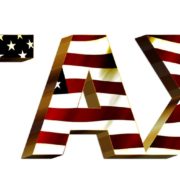Are Dividends as Good as They Sound? – Part 3

Money Matters – Skloff Financial Group Question of the Month – July 1, 2021
By Aaron Skloff, AIF, CFA, MBA
Q: We read the article ‘Are Dividends as Good as They Sound?’ Part 1 and Part 2 . With interest rates so low, what are the pros and cons of simply buying stocks with high cash dividend rates?
The Problem – Investing in Stocks with High Cash Dividend Rates
Many investors believe dividends are a great way be ‘paid to wait’ while they wait for their stock to appreciate. This often leads them to invest in stocks that pay high cash dividends. This simplistic approach has historically generated relatively weak performance.
The Solution – Investing in Stocks That Can Generate the Highest Total Return, Consistent with Your Risk Level
The total return of a stock is a combination of the cash dividend paid plus the appreciation. Investors can experience a negative total rerun, after including a high cash dividend – and that is before paying taxes on the dividend. Investors should invest in stocks that can generate the highest total return, consistent with their risk level.
Are You Interested in Learning More?
Let’s examine the pros of high cash dividend rate stocks:
- They create a high nonguaranteed passive stream of income that can complement or replace other sources of income.
- Dividends are often paid quarterly, avoiding the need to sell stock quarterly to replicate the dividend.
- Some companies are poor allocators of capital. They would rather pay you a cash dividend than invest in their own business, buy another business, pay down debt or buy back their own stock. You are better off taking the cash for that type of company.
Let’s examine the cons of high cash dividend rate stocks:
- They create a continuous distribution of capital from the company, whether the stock is trading at a high or low valuation.
- Dividends can starve a company of the precious capital needed to invest in their own business, buy another business, pay down debt or buy back their own stock. This starvation can kill a company.
- The total return of high cash dividend rate stocks have underperformed medium and low cash dividend rate stocks. As seen in the chart below, a hypothetical $100,000 investment from 2011 to 2020 would have generated total returns in investments that replicated the following indexes as follows: FTSE High Dividend Yield Index (paid high dividends) $298,971, S&P 500 Index (paid medium dividends) $367,000 and NASDAQ Index (paid low dividends) $652,247. The index that paid the lowest cash dividend rate generated more than twice the total return of the index that generated the highest cash dividend rate. Although past performance is no guarantee of future performance, Winston Churchill wrote, “Those that fail to learn from history are doomed to repeat it.”
Click to Enlarge
Action Steps – Invest in Stocks That Can Generate the Highest Total Return, Consistent with Your Risk Level
Cash is not always king. Cash can be the jester. Invest in companies that generate the highest total return, consistent with your risk level. Do not get lured into a high cash dividend rate stock, as capital deprecation can more than offset the dividend, leaving you with a negative total return.
Aaron Skloff, Accredited Investment Fiduciary (AIF), Chartered Financial Analyst (CFA), Master of Business Administration (MBA) is CEO of Skloff Financial Group, a Registered Investment Advisory firm specializing in financial planning, investment management and benefits for small to middle sized companies. He can be contacted at www.skloff.com or 908-464-3060.














